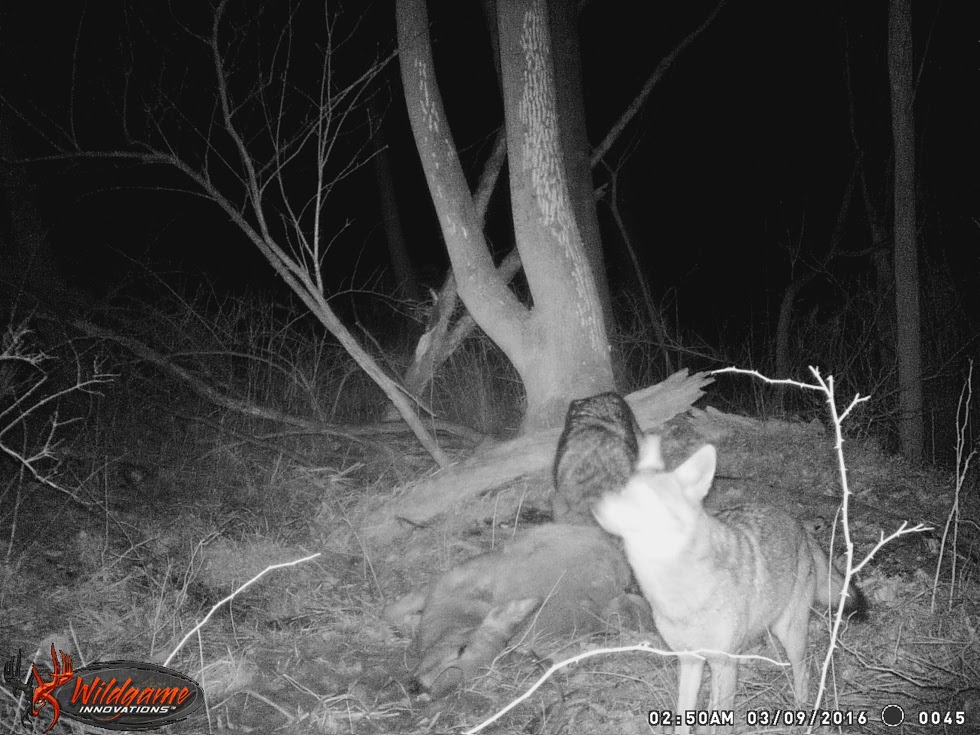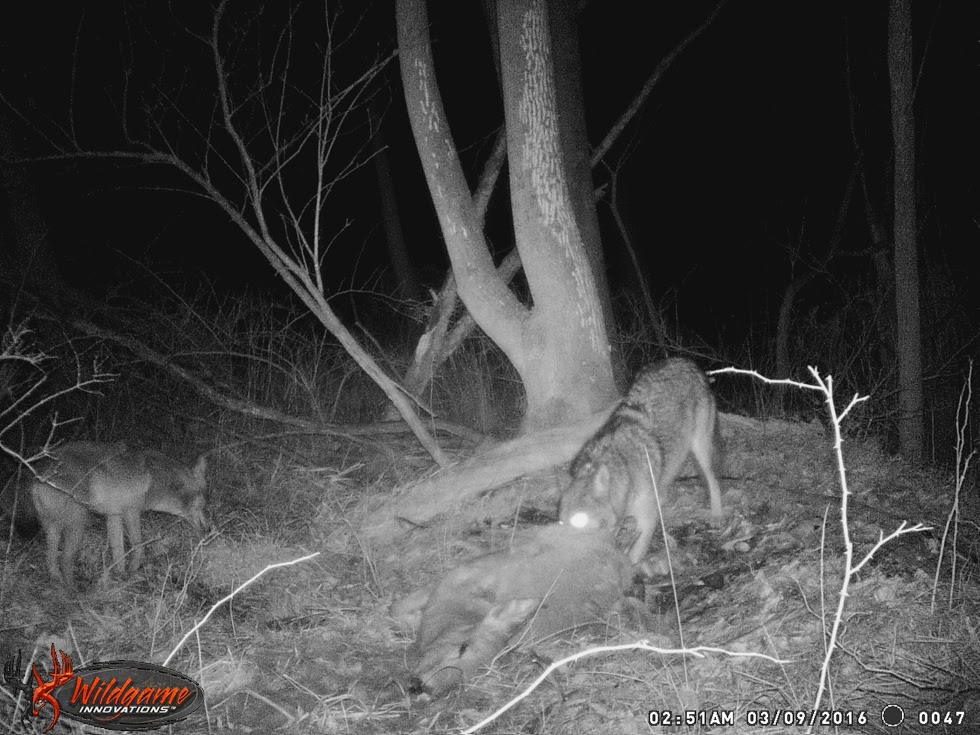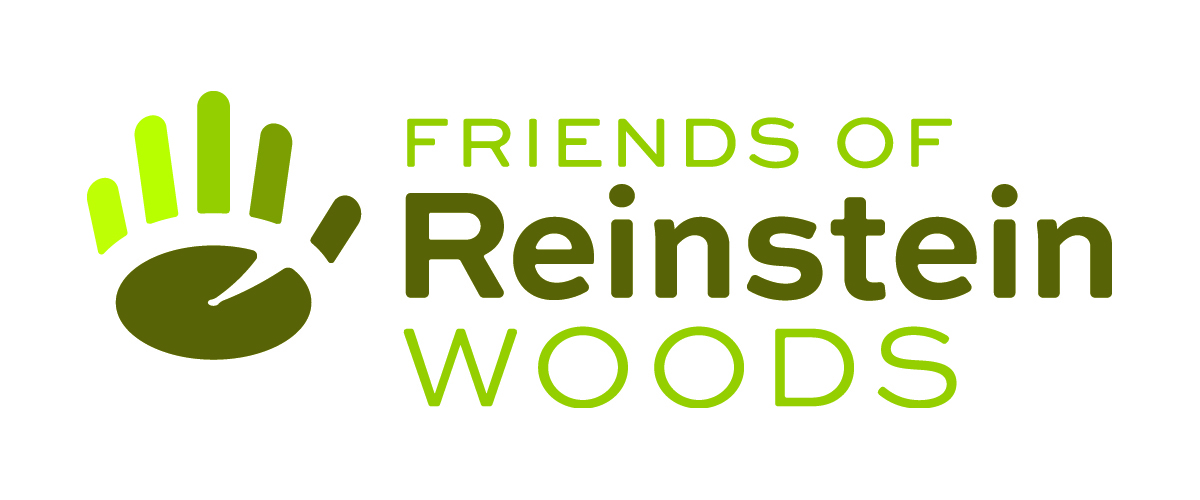Tag Archives: National Environmental Education Week 2016
National EE Week Part 5: Climate Changes

I admit it: I hate heat. I hate hot weather the way many people hate snow. I’d rather throw on an extra layer than sweat through a 90 degree day.
Like it or not, our planet is getting warmer, and that is changing the climate- the general pattern of weather upon which our food and water sources depend. The thought of it can be overwhelming, enough to make you sweat even in winter.
While we can’t change what’s already happened, we can change our behavior to affect the climate of the future. The most important thing we can do is make our voices heard to those in a position to create policies that will have a positive long term effect. Beyond that, try a few small actions in honor of Earth Day 2016:
Turn it off. Look around right now. How many lights are on that aren’t really being used? What about a TV? Lighting can be more than 10 percent of your electric bill, while the fossil-fueled power plants that provide the electricity are adding to the planet’s warming. Get in the habit of turning lights and other electronics off. Everywhere you go- does that TV really need to be on in the empty waiting room?
Plant a Tree or Native Plant. Trees take one of the main climate change culprits, carbon dioxide, out of the air. So planting one helps. How do native plants help? Come to Lyn Chimera’s talk on May 22 and find out.
Recycle. Do you throw things out at work that you’d put in a recycling bin at home? Could you bring them home? If you aren’t sure what to put in a bin, check out the City of Buffalo’s guide– just type in an item and it will tell you if it’s recyclable. Remember Reinstein Woods accepts:
- sneakers for reuse,
- used clothing and bedding for reuse or recycling for Hearts for the Homeless
- hair care, skin care, and cosmetic product packaging through Terracycle.
Volunteer. On May 7, volunteers will gather at Reinstein Woods to remove invasive species, plant native plants, and even search for geocaches while picking up trash at Earth Day in May. If you can’t make it to Reinstein Woods that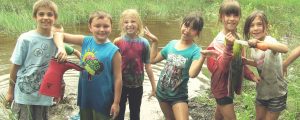 day, check out the I Love My Park Day website to find a park near you and volunteer.
day, check out the I Love My Park Day website to find a park near you and volunteer.
Get Out. A growing body of evidence suggests that kids who spend time outside are happier, healthier and do better in school than kids that don’t. Bonus: they are far more likely to grow up to support environmental causes, which is good for the future climate. To help a kid experience the outdoors, you can donate to Friends of Reinstein in support of scholarships for the Kids in the Woods Summer Day Camp or the Pat Taeger Field Trip Fund. For more info, call (716) 683-5959 or email info@reinsteinwoods.org.
And get outside today too- it may not be hot, but you will feel happier and healthier too!
National EE Week Part 1: Scavengers!
Happy National Environmental Education Week! Reinstein Woods is excited to be part of this national effort that encourages and celebrates environmental learning across the United States. To celebrate, this week we’ll be highlighting some interesting nature sightings and activities at Reinstein Woods!
Recently a deer passed away in Reinstein Woods, we think after being hit by a car. Since in nature everyone is someone else’s lunch, we were curious who would visit the carcass. Naturalist Intern Heather Rutherford mounted a trail camera at the site of the carcass and recorded the visitors over four days in early March. The camera revealed visitors that you are likely to see on a stroll through Reinstein Woods, and also more reclusive creatures that call Reinstein Woods home.
The first visitor was a red-tailed hawk. The most common hawk in New York State, the red-tailed hawk is often seen sitting on telephone posts along roads, searching for small mammals in the grass below. This raptor will take advantage of carrion like this fresh deer. 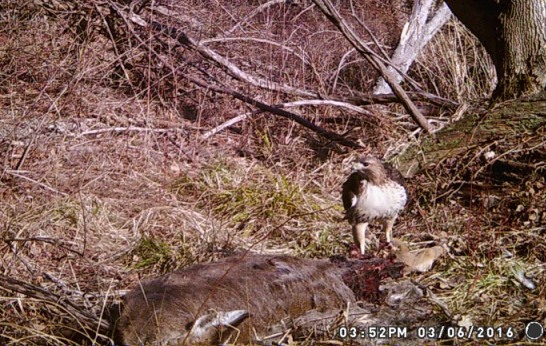
This or a different hawk visited the carcass on each of three successive days, showing off the red tail that gives it its name. 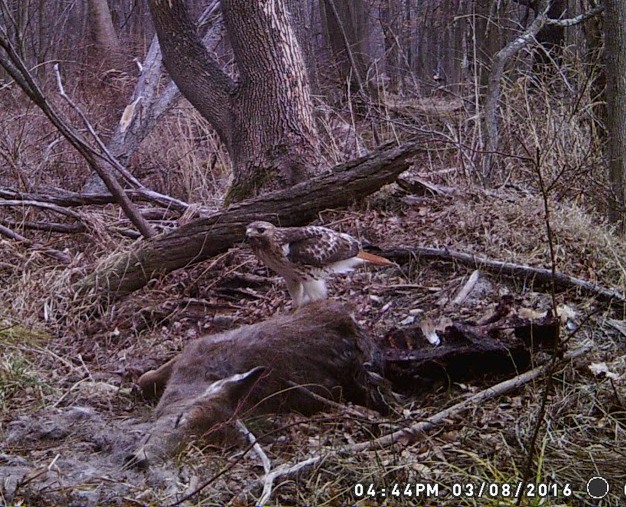
The next visitor was a white-tailed deer who may have wandered in out of curiosity, or just by chance.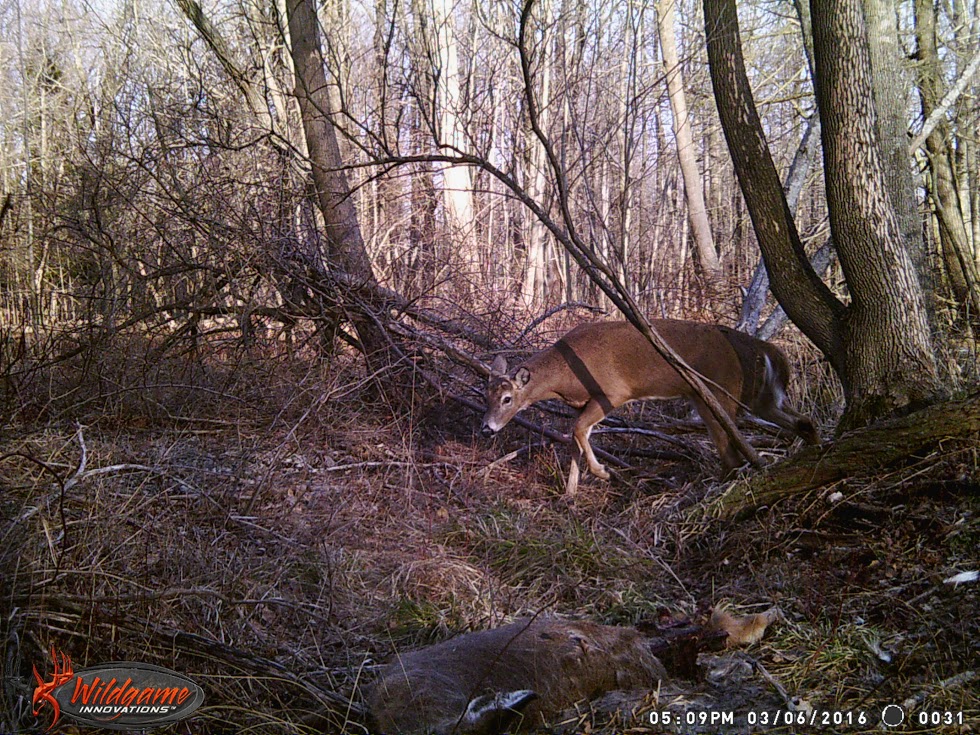 While white-tailed deer are most active at dawn and dusk, their abundant local population makes them a frequent sighting on walks through Reinstein Woods.
While white-tailed deer are most active at dawn and dusk, their abundant local population makes them a frequent sighting on walks through Reinstein Woods.
Within a couple of hours, a coyote appeared on camera. These much misunderstood animals live at Reinstein Woods but are seldom seen. They will scavenge on deer carcasses but don’t often kill adult deer, preferring instead to hunt for smaller animals like rabbits, mice, voles, and other small mammals. They will eat insects and berries at certain times of year as well. (Humans are not on their list of preferred dinner items).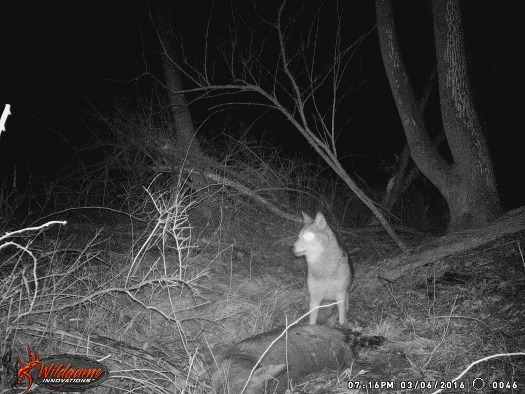
The coyote stuck around for only a few minutes on this first visit, but as soon as the coyote was finished with its snack, a red fox stepped in for a meal (note the time on the photo below).
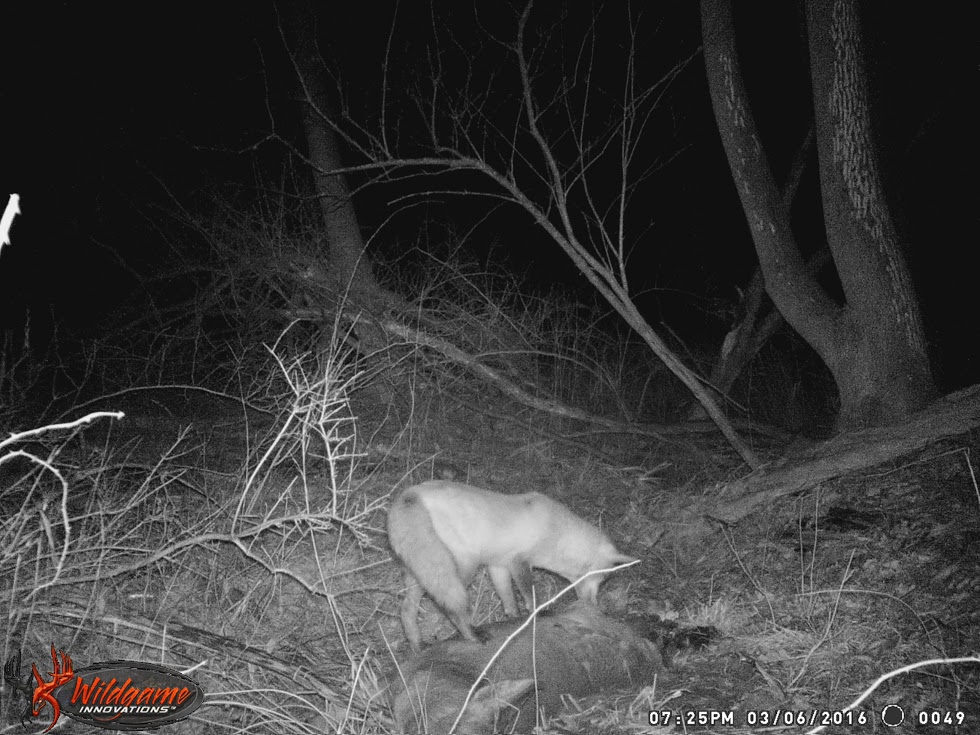
These smaller members of the canine family will also feed on a dead carcass, but their diet mainly consists of small mammals, birds, eggs and fruit. Fox enjoy the mix of habitats provided by suburban neighborhoods, so it is not unusual to encounter one at twilight at Reinstein Woods or to spot one in the surrounding neighborhood.
Over the next couple of days, the camera captured several visits by coyote and red fox. Interestingly, in the early hours of March 9, a fox was enjoying a meal…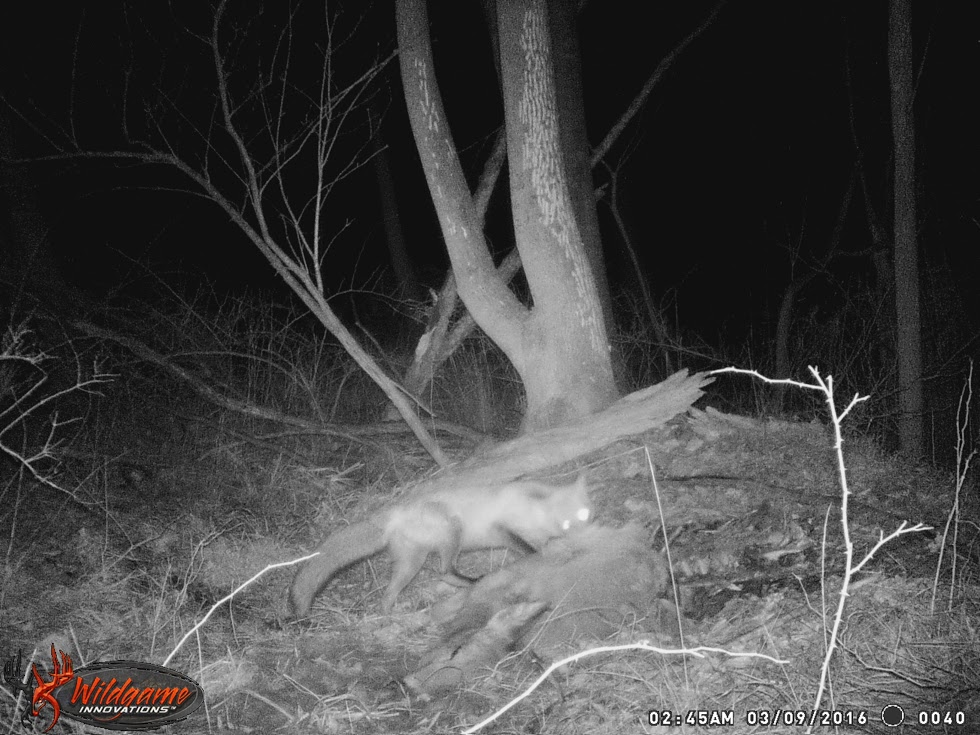
When it was interrupted by not one…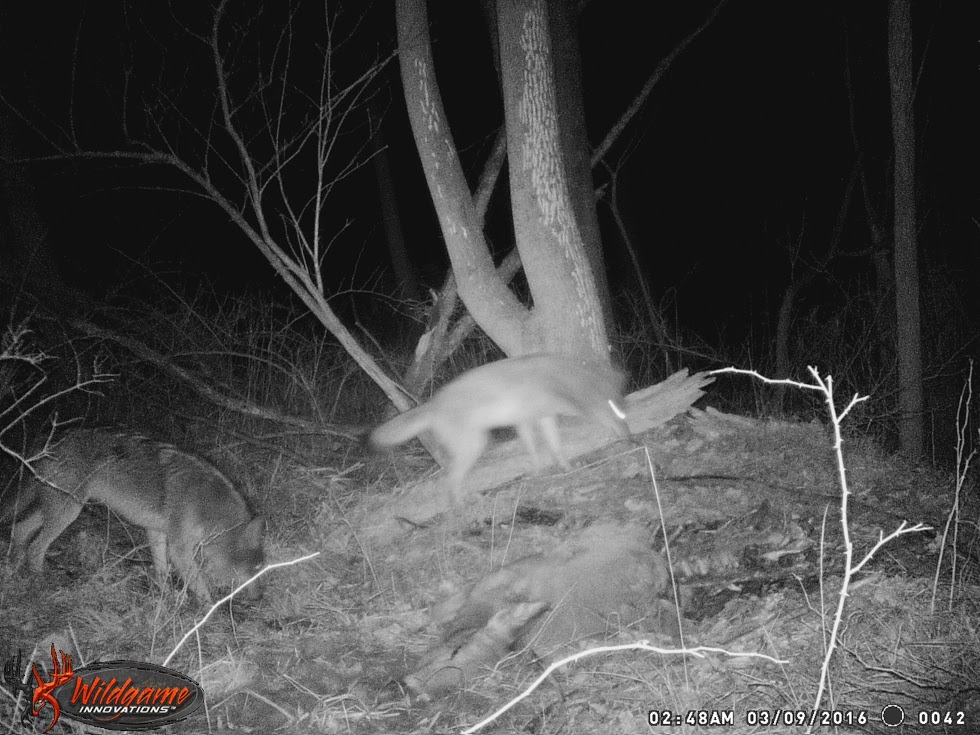
but two coyotes!